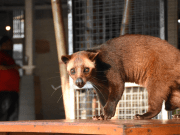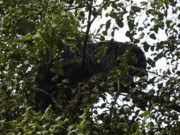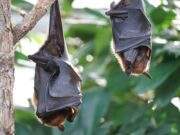The butterfly effect is the concept that small events can have great consequences. These consequences can either be negative or positive. This concept was proposed by MIT meteorologist, Edward Lorenz whose suggestion is that a great storm in a part of the world may be as a result of the faraway flapping of the tiny wing of a butterfly.
Naturally, this seems impossible or for lack of a better word, absurd. However, applying this concept in our everyday lives makes sense in that sometimes little things give rise to greater outcomes.
This article seeks to understand how the butterfly came into being by looking at its life cycle and importance and if these parameters can help us understand or “feel” the butterfly effect.
LIFE CYCLE
The butterfly undergoes complete metamorphosis which simply means transformation or change in shape at each developmental stage. There are four stages involved and they are the egg, larva (caterpillar), pupa(chrysalis), and adult stages.
The female butterfly usually lays numerous eggs at once so that a few can survive in the event of adverse physical conditions. These eggs are very tiny depending on the species.
After a few weeks, the egg transforms into a larva or caterpillar. This stage is described as the feeding stage as all the caterpillar does is feed and grow bigger and longer in size. It also stores food and energy needed for the next stage of development. This stage is also characterized by the shedding of its skin four or five times.
The larva then transitions into a pupa which is also called a chrysalis. The caterpillar stops feeding and either suspends under a branch, hidden in leaves or buried underground depending on the species involved. At this stage, movement ceases and it appears “dead” or as though nothing is going on when in actual fact numerous developmental changes are ongoing within the organism. Some species stay this way for up to two years until it emerges into an adult butterfly.
The cycle clearly involves different physiological forms at each stage of development which makes one wonder how and when the butterfly will eventually emerge. However, it does emerge after the various physiological changes it undergoes into a completely beautiful creature which many of us admire. Throughout the entire process, we are left wondering if these physiological changes are significant enough to give us the end result we expect. Naturally, it does. Can we then say that this seeks to explain the phenomenon of the butterfly effect?
WHAT YOU DID NOT KNOW ABOUT BUTTERFLIES!
- The butterfly serves as a source of food for other organisms such as birds. Thus, butterflies ensure a balance of the ecosystem.
- Butterflies are bio-indicators of the environment. Butterflies are sensitive to subtle habitat or climatic changes and therefore indicate the state of the biodiversity in a habitat. The presence or absence of certain butterflies within a time frame thus serves as a signal to inform us of either an impending doom or the start of good things. Also, the presence or absence of certain species of a butterfly indicates the state of the environment. That is if it is a forest area, a degraded environment or if there is the presence of a waterbody.
- Tourism: Without a possible doubt, people travel far and wide just to watch and admire the beauty of these insects. The monarch butterfly of Mexico for instance is a good source of tourism as they undergo a remarkable form of migration which draws a lot of attention.
- Aesthetics: Most people from the beauty and fashion industry draw some inspiration from the patterns and colors of the wings of the butterfly and incorporate these into their craft. Some people also go in for butterfly tattoos which are very common today. Some say it symbolizes freedom and beauty whiles others say it signifies change and spiritual rebirth. Either way, it tells us the number of inspiration people draw from the butterfly.
CONCLUSION
The transformations in the lifecycle of the butterfly lead to growth and development. These “unusual” changes are what births the beautiful creature we see and admire.
Understanding this lifecycle speaks to our daily lives so we accept change and transformation as tools that empower us to release the old and embrace the new.
The butterfly relatively has a short lifespan probably because of all the gradual processes and changes it goes through to emerge as an adult. Whether or not the butterfly effect can be “felt” here, we can still appreciate the little things we learn from their struggle and maybe apply them in our daily lives.
Drafted by Miss Elsie Ofori an animal biologist from the University of Ghana

































